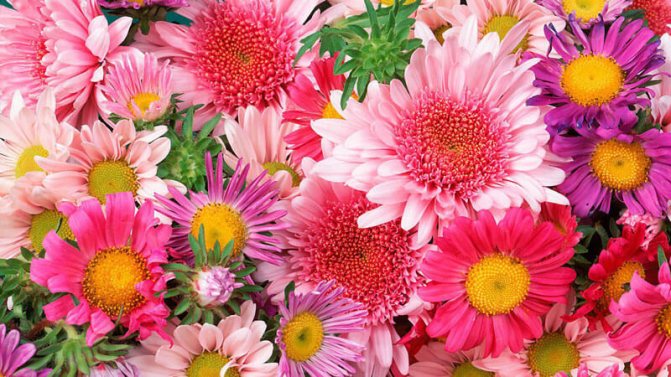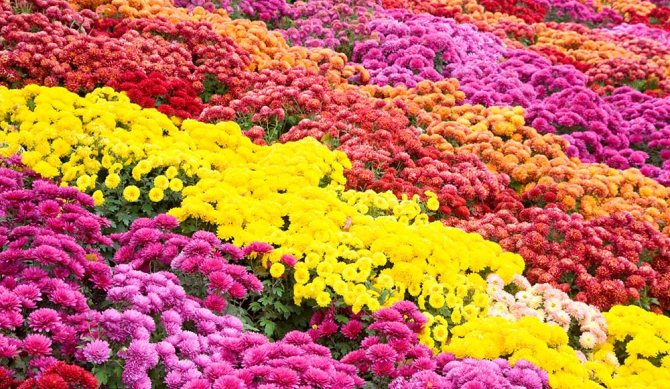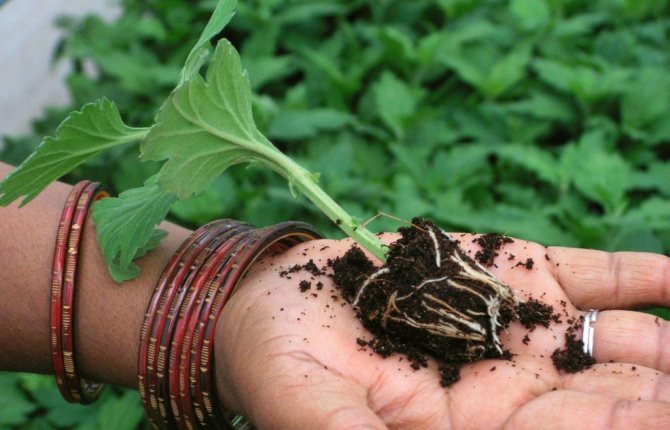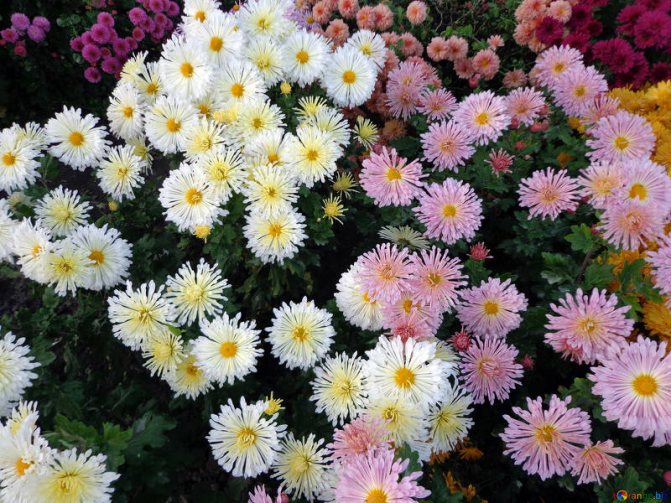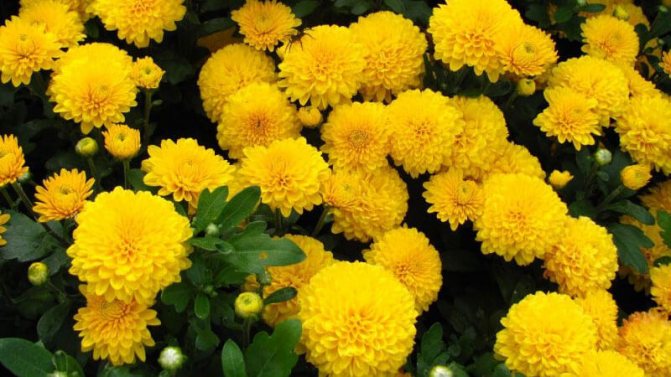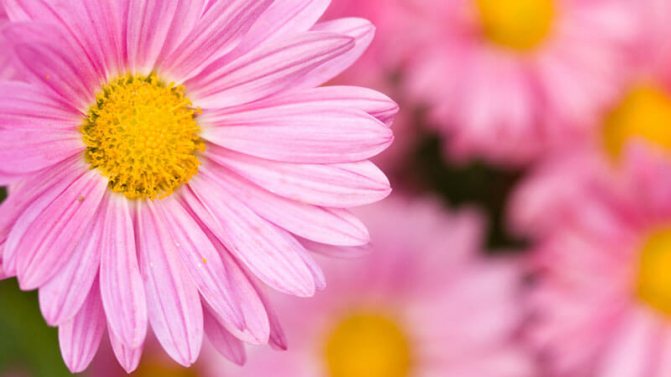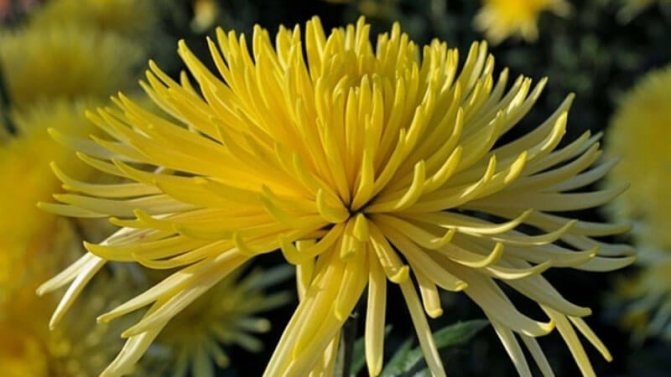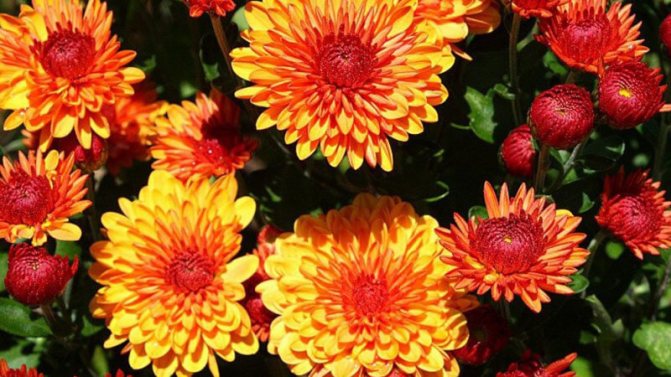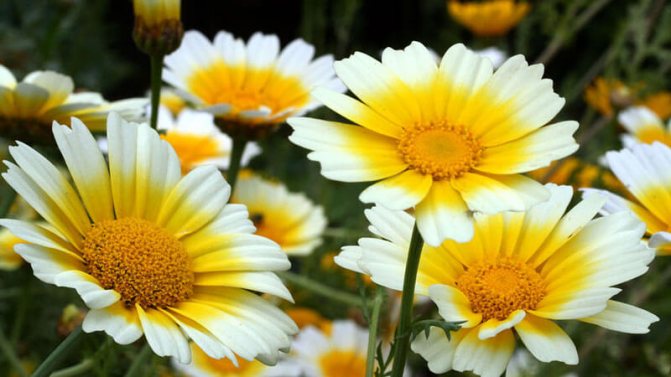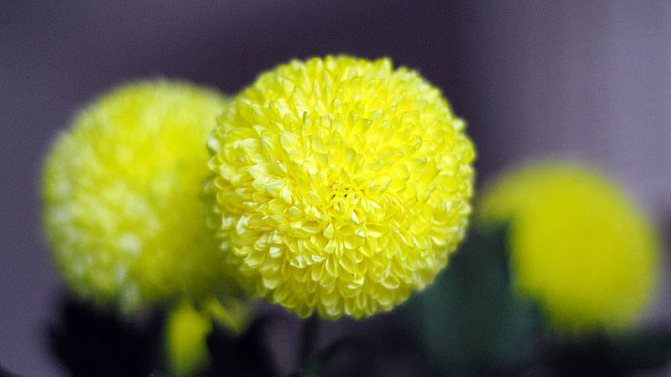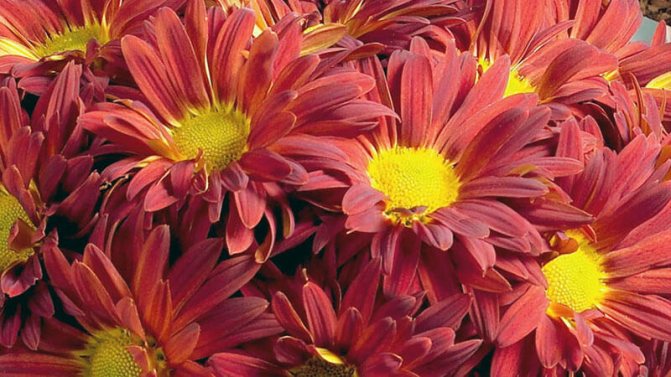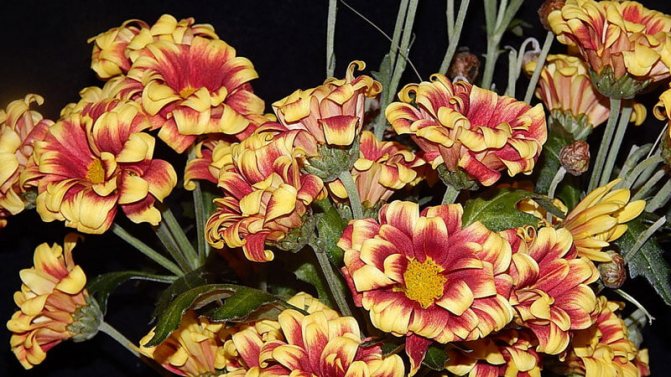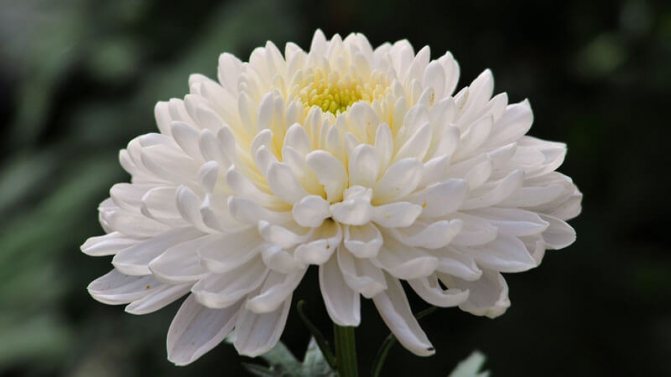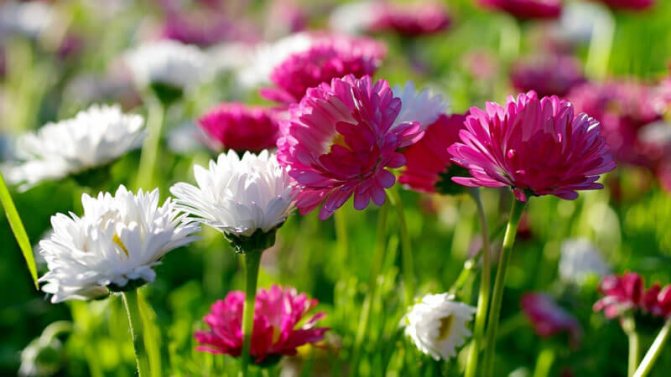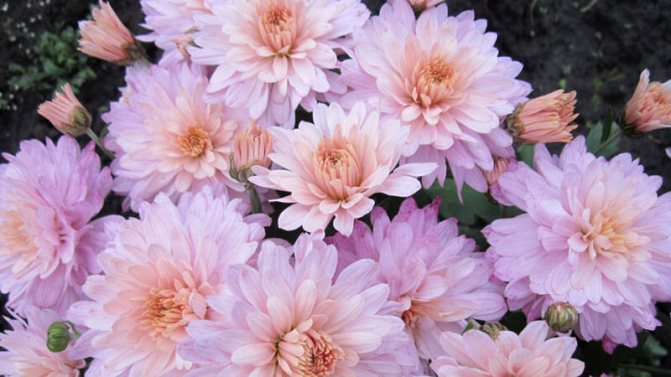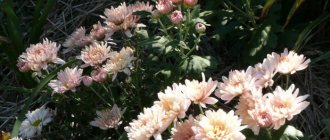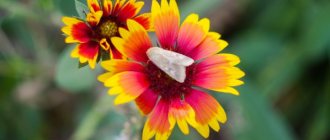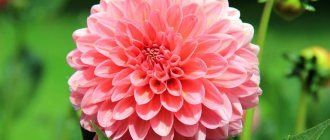Chrysanthemums: varieties and varieties
It is not in vain that they say about perennial chrysanthemums that they inspire optimism in a convinced pessimist. After all, these lush and fragrant flowering plants can make bright not only a personal plot, but also the life of a gardener who grows picturesque plants and horticultural crops.
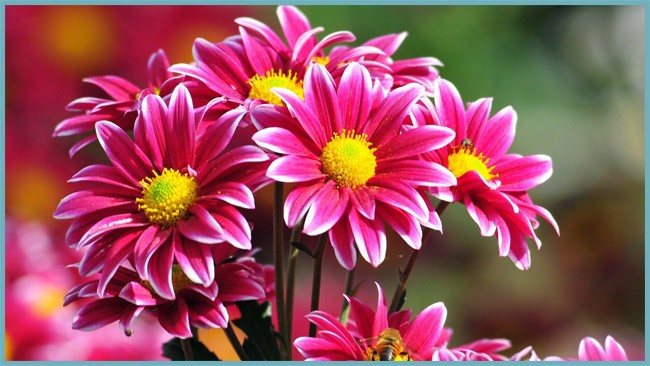
Chrysanthemums can be completely unusual and bright colors.
Every time you buy a bag of an unknown variety, you are amazed at the duration of its flowering, the magnificent colors, the height of the plant, the shape and texture of the petals, as well as the degree of their doubleness.
Breeders divide chrysanthemums into:
- simple forms;
- large-flowered;
- terry.
There is also a gradation in color, flowering periods, flower size and decorativeness. Many subspecies of chrysanthemums are intended only for subsequent cutting and making bouquets - these are the so-called bouquet chrysanthemums. Their height can vary from 15 to 150 cm. Such a wide range allows you to decorate entire flower beds with a variety of cultures, which will bloom and delight the eye at different times - from mid-June to the first snowfall.


Chrysanthemum flowers of various shapes and sizes
As for the color of the buds, it is impossible to immediately list all the colors and shades. There is an unthinkable number of colors that excite the imagination: white and lemon, orange and purple, crimson red, lilac and emerald.
The historical homeland of chrysanthemums is Northern China, where residents were actively engaged in the selection of this amazing and, fortunately, unpretentious garden culture. Thanks to the merits of professional breeders, today it is possible to grow chic varieties of perennial chrysanthemum with excellent consumer properties.
The most widespread and well-known variety - "Early Yellow" is close in decorativeness to Japanese anemones. Today there are about 700 varieties of these garden plants.
- Very popular bush chrysanthemums, which are equally suitable for arranging the landscape of the garden, and for cutting.
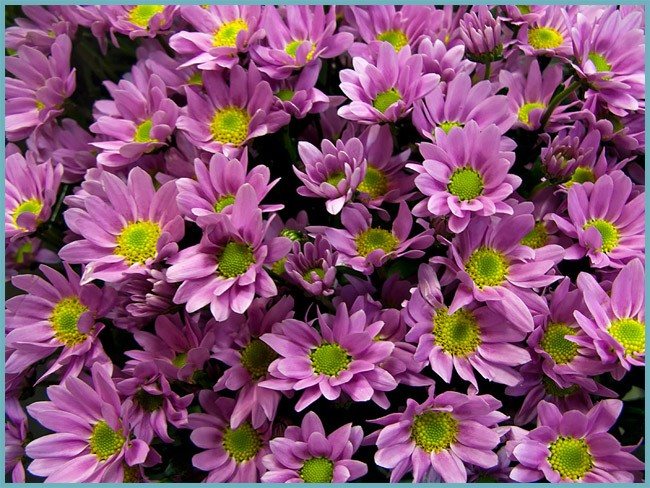

Bush chrysanthemums - There are also feathery double flowers with a very dense and lush planting of petals. Due to this, they take the shape of a ball, completely covering the flower bed.
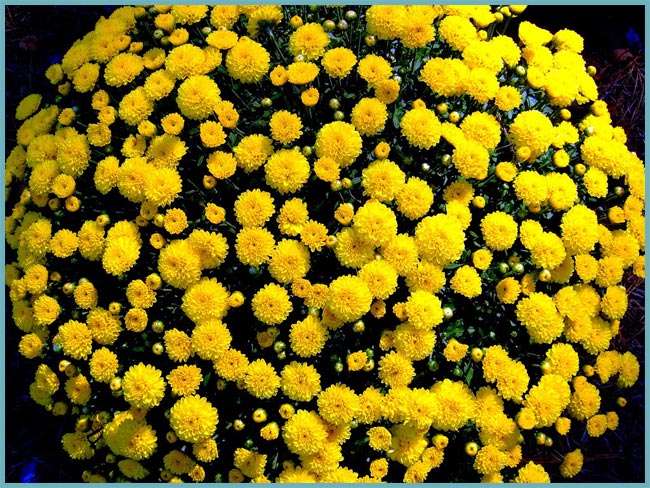

Terry chrysanthemums - Bristly chrysanthemums attract attention with their thin and slightly twisted petals, which outwardly resemble graceful brushes.
- Pompon varieties chrysanthemums boast an ideal spherical shape. Dense terry, bright colors and long flowering in any growing conditions are the undoubted advantages of this variety.
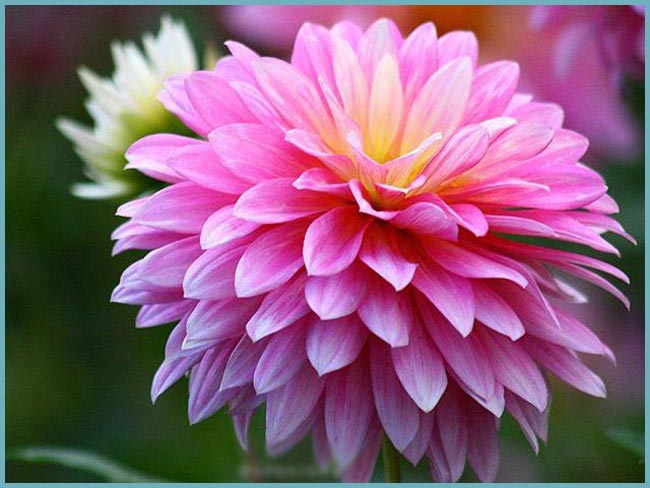

Pompom chrysanthemums - Semi-double varieties include a great variety of shapes, colors and structures. A prominent representative of this group is a garden plant with slightly drooping inflorescences. Their middle is almost not closed, and along the edges there are petals of the most unexpected shades and shapes.
- Simple varieties are represented by very graceful and at the same time uncomplicated inflorescences, outwardly resembling a garden chamomile in shape.
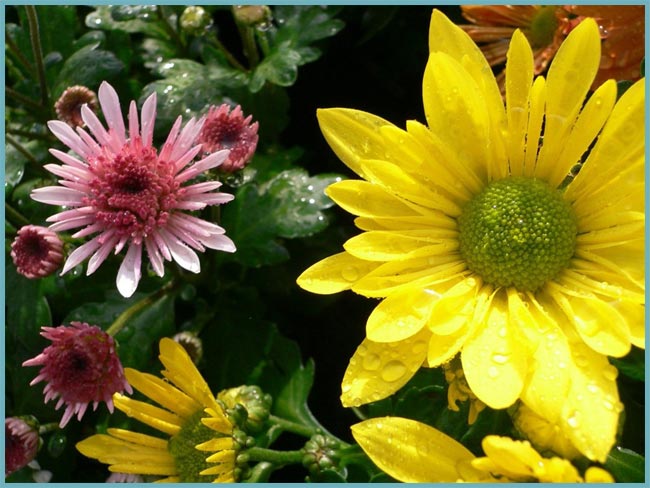

Simple varieties - Perennial chrysanthemums anemone-like varieties easy to recognize by the simple shape and slightly convex heart of the inflorescence. It seems to rise above the petals and reach for the sun.These are the most delicate representatives of garden chrysanthemums, which smell pleasantly and create a good impression.
- Spoon-shaped chrysanthemums are rare varieties. Already by the name it can be understood that the flowers are somehow magically connected with spoons. The thing is that the shape of each petal resembles a teaspoon.
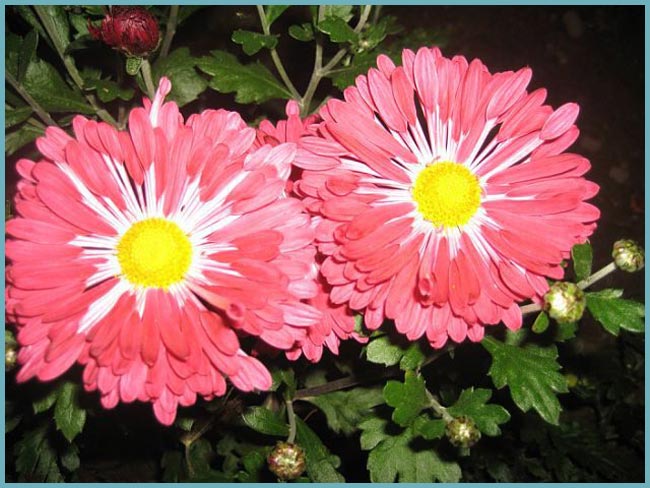

Spoon-shaped chrysanthemums
Choosing a location for a perennial chrysanthemum
When thinking about where to plant a chrysanthemum, you need to expect that the bush will grow in one place for at least 10-12 years. Therefore, it must fit well into the overall design of the garden and match its style.
A tall shrub can act as a tapeworm. In this case, you need to choose a sunny place with fertile soil. It is permissible to surround the chrysanthemum bush with a lawn.
Low-growing varieties are most often planted in mixborders in composition with flower crops blooming at a different time period or in single-species borders. If a chrysanthemum is planted in a composition, then it is important to choose plants that will not antagonize it. Quite good combinations are obtained when planting chrysanthemums together with cineraria, asters, garden daisies. Asters need to be selected in harmony with chrysanthemums in the texture of the flower.
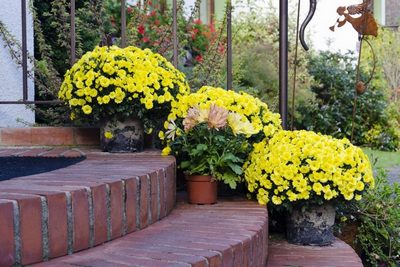

Nowadays, the potted culture of chrysanthemum has become very popular. The advantages of a potted culture are its mobility, flower pots can be placed at any time in the right place: on the veranda, on the stairs, on the balcony or even in the yard. You can delight guests by greeting them with flowers.
A pot with a low-growing chrysanthemum does not take up much space, does not require complex maintenance, and is always highly decorative. To maintain decorativeness, the bush can be trimmed or subjected to the so-called molding, giving it a rounded shape if possible.
Chrysanthemums: planting and care in the open field
Perennial chrysanthemums do not like darkening and high humidity very much, so it is better to plant them on a small hill and in a sunny place. This will save you from pulling shoots, changing the time and duration of flowering.
Attention! Chrysanthemums have a superficial root system, so overdrying the soil is unacceptable!
For planting, it is recommended to use very loose and moisture-permeable soil with sufficient nutrient content. If the soil is too dense, it is recommended to mix it with peat or compost. To improve drainage qualities, you can use coarse sand and fine gravel.
Attention! Garden chrysanthemums, which are not labor intensive to grow, prefer a neutral potting mix.
A cloudy, or even better rainy day is chosen for planting. A hole up to 40 cm deep is watered abundantly, drainage is done. Then a chrysanthemum is placed and lightly sprinkled with earth.
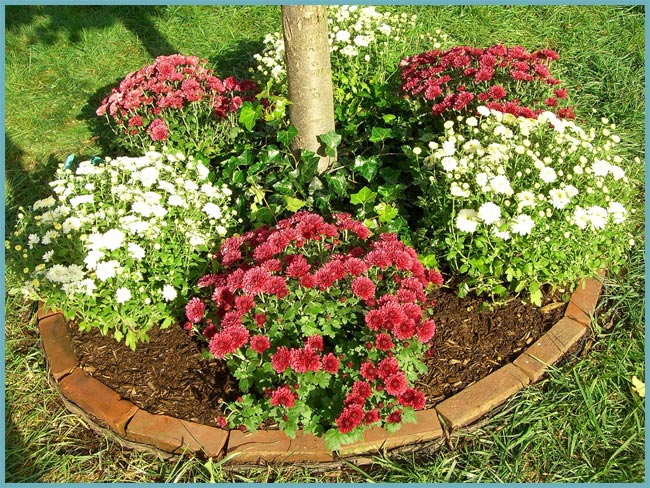

Chrysanthemum thrives in the shade of trees
Attention! The plant should not be deeply buried, because the root system grows parallel to the ground.
If low-growing varieties will be grown, then you need to worry about additional support in advance. A couple of days after planting, you can remove the growth point on the culture. After another 3 weeks, the tip of the shoot is neatly broken off.
Advice! After planting the plant in the ground, shade it using a non-woven material. Make sure that it does not touch the leaves of the plant.
Growing chrysanthemums from seeds - step by step instructions
It is not difficult to grow chrysanthemums from seeds if you buy them at the store. However, it is worth considering the option in which the gardener independently extracts them from flowers.
Step 1
Getting seeds from a flower is considered the most difficult process. Flowers intended for collecting seeds need to be planted before the others, so that they have time to give them before the first frost occurs. It is required to carefully remove the seeds from the bud without damaging them.After that, they can be preserved by placing them in a paper bag.
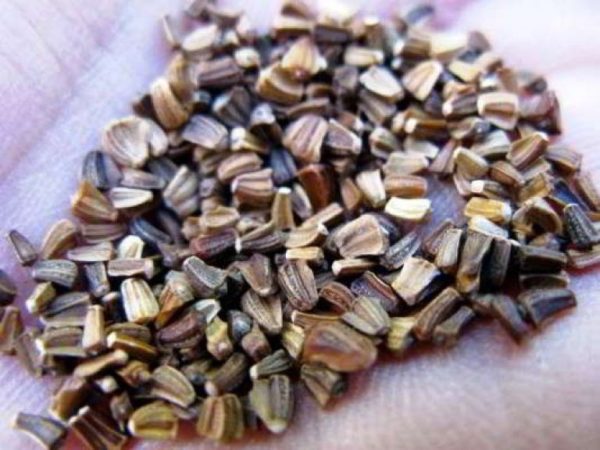

Bud seeds
Step 2
Disinfect the seeds in a solution of potassium permanganate so that they definitely do not have pathogenic microbes that can cause flower disease. The seeds themselves are wrapped in cheesecloth or a rag and placed in a weak solution for 3 to 5 seconds. Then they need to be pulled out and dried.
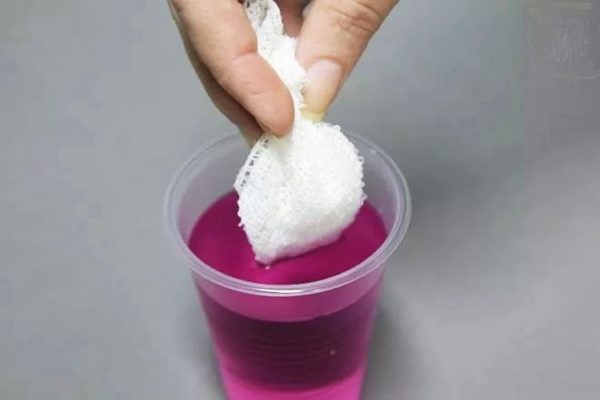

Seeds in a solution of potassium permanganate
Step 3
Place under a damp cloth / cheesecloth (lukewarm water must be used) to allow the seeds to germinate a little. It is important not to let them dry out, so water must be added periodically.
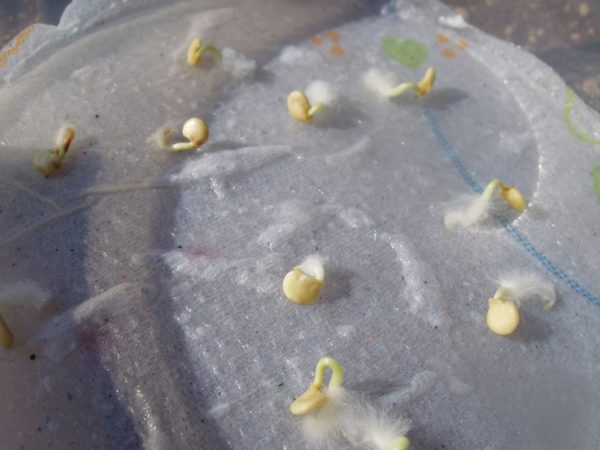

Seeds on wet gauze
Step 4
Plant sprouts in prepared containers with soil. It is necessary for this to make a small depression in the center. In this case, it is required to plant carefully so as not to damage the incipient root.
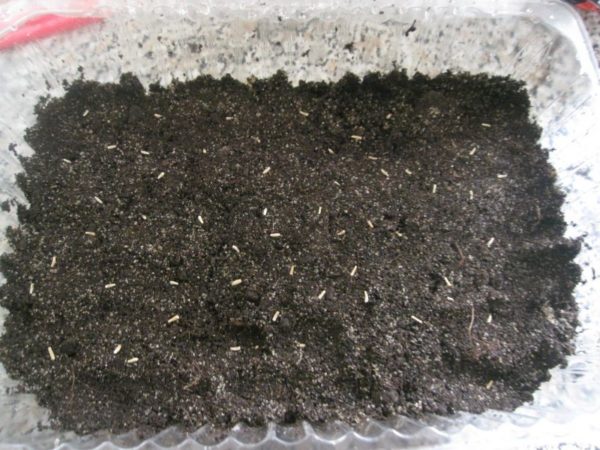

Planting seeds in the ground
It is worth noting that it is possible to plant in separate containers or several seeds at once in one box. Depending on the growing conditions, the percentage of seed germination can vary from 30% to 90%. At the same time, it is recommended to plant it in the ground when the seedlings become stronger and the root system grows.
Important... It is recommended to plant each seed in a separate glass, since the root system of the chrysanthemum quickly grows. Thus, the grower will not damage it during the transplant. In this regard, the plant will quickly adapt to new conditions and begin to grow further. It will also be significantly stronger against pests and other external factors than shoots whose root system has been damaged.
Plant care
When growing garden chrysanthemums on a garden plot, it is important to remember that watering should be moderate, otherwise the plant will rot from an excess of moisture. An exception, perhaps, can only be a very dry and hot period.
Attention! Lack of moisture can lead to woody plant stems and loss of decorative effect.
Further care of your perennial garden culture will not take much of your time. Regular watering, thorough loosening, timely feeding and spraying from various parasites are all the activities that will be required for the full growth and colorful flowering of the chrysanthemum.
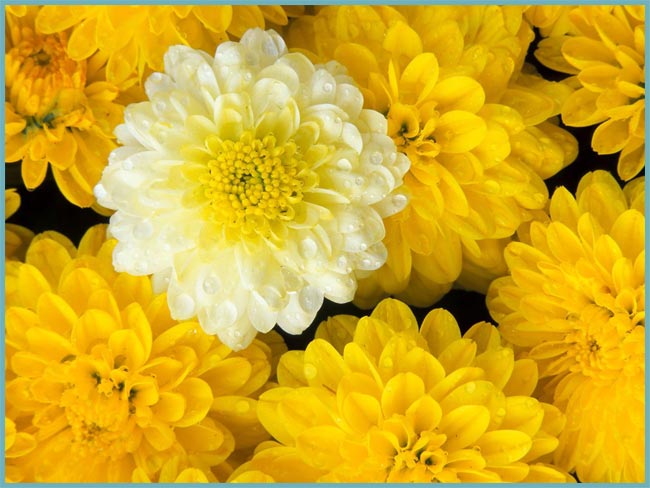

The moisture balance in the soil is very important for the crop.
You need to take special care of the culture closer to cold weather and frost (end of October). Despite the fact that chrysanthemums tolerate low temperatures well, it is better to build them a frame with a film coating. Such a simple measure will allow you to admire the bright colors and lush flowering of delicate flowers for another month. The frame can be removed by December, and the bushes can be planted in pots and placed on the windowsill in a bright veranda, where the chrysanthemum will bloom until January.
Fertilizing and feeding chrysanthemums
The plant is fed weekly with mullein infusion in a ratio of 1: 10. Lush blooms can be obtained by introducing a balanced amount of phosphorus and potassium fertilizers into the soil, and the green mass can be increased using fertilizing based on nitrogen.
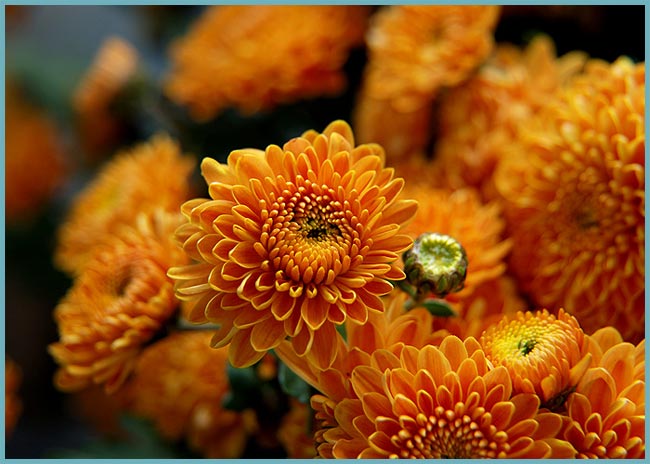

The more often you feed the chrysanthemum, the more lush and longer it will bloom.
Attention! At the time of fertilization, it is important to ensure that the fertilizing does not fall on the leaves and cause them to burn! It is better to under-feed the plant than to burn it!
How to care for a garden chrysanthemum in the garden in winter
If you want flowers to amuse you every year with their lush and abundant blooming, then you have to ensure that they winter properly. Each variety has its own individual care rules and growing preferences.
How to prune in the fall
Even if there are varieties in your garden that can withstand the cold, they still need to be covered with the onset of winter.To do this, be sure to cut the stems of the plant to the very ground after its flowering ends. The land around it must be huddled and covered, using fallen leaves for this.
In the event that you become the owner of large-flowered chrysanthemums, then remember that these species do not tolerate even minor frosts. To keep them from freezing, dig them up with the soil and place them in a pot. Plants prepared for wintering must be placed in a room, the temperature of which will not fall below 0 mark and will not jump above 5 degrees. In spring, when planting is carried out, the container must be taken out. Throughout the winter, it is necessary to water the earthen lump, not allowing it to dry out completely. But remember that over-watering is just as bad for the plant as drought.
Plant propagation
Breeders recommend propagating a perennial crop only by cuttings and dividing the bush, since the seeds often do not preserve the variety.
Attention! Reproduction is best done in late spring (in May), when the probability of frost is minimal. The beginning of summer is also a good period for replanting the plant.
If you only have material for planting closer to autumn, then have time to plant it by mid-September so that the first frosts do not break the spirit of the plant. Otherwise, the seedling can be transplanted into a wide, but (very important!) Shallow pot, having previously cut it low.
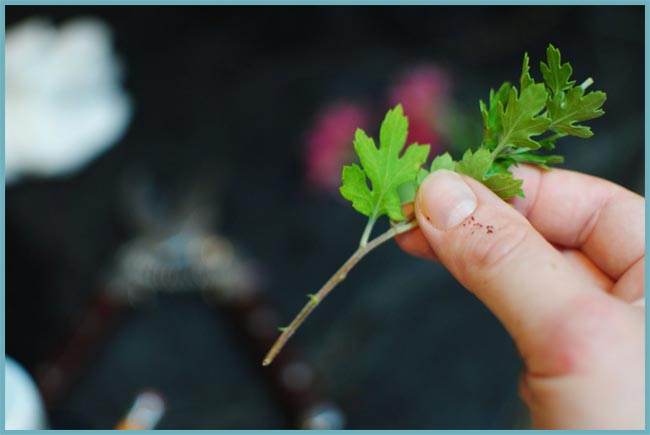

Chrysanthemum reproduces well by cuttings
The container with the planted chrysanthemums is placed in a dark place (it can be a loggia or a terrace), where the temperature is kept at a constant level of 4-6 ° C. Throughout the winter period, you need to maintain an optimal level of soil moisture.
At the end of winter, the bushes can be planted in a greenhouse or flower greenhouse, where they should be watered as often as possible. By the end of March, when the shoots have grown a little, you can cut the cuttings and carefully plant them in a box with a mixture of soil, humus and sand, then cover them tightly with a sheet of glass. A month later, when the cuttings take root, they can be planted in wider containers, and then in open ground.
Features of the
There are many varieties of chrysanthemums, each of which is good in its own way. The most popular among them are: orange-scarlet "Apollo", burgundy "romenta", creamy "first snow", "lilac fog", pink "hebe", yellow "svemba", "multiflora". But despite such a variety, the famous Korean chrysanthemum, which has inflorescences that resembles an indoor flower, a bride, has been in greatest demand among gardeners for many years. In the photo you can see what Korean chrysanthemums and other popular varieties look like. As you can see, every gardener can find a plant to his taste: with large and small flowers, perennial and annual, variegated and muted.
As for the Korean chrysanthemums, they have many advantages:
- resistance to low temperatures;
- compatibility with other plants;
- beauty;
- profuse long flowering, which lasts until the first frost.
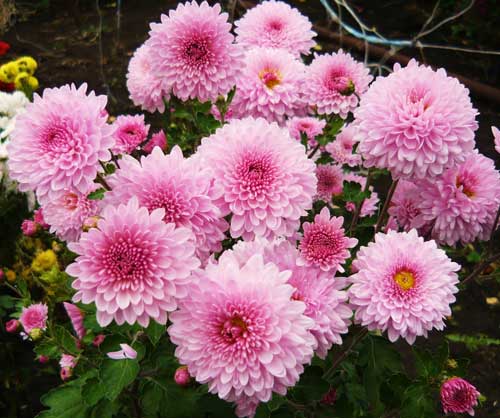

If you start growing chrysanthemums in the open field, then they will delight you with their flowering in August and will bloom throughout the fall. This plant is not afraid of frosts up to seven degrees below zero.
Residents of the northern regions mistakenly believe that chrysanthemums should not be placed in open ground. However, in fact, these flowers hibernate well if properly prepared. To do this, you just need to cut off the stems, leaving some stumps no more than 15 cm high. Then they should be covered with peat, and covered with fallen leaves and spruce branches on top.
Diseases and pests
Since a great many different microorganisms live in any soil, the plant periodically needs to be treated with special preparations that will reliably protect against diseases and pests, root rot. Abundant watering will keep the crop from mites and aphids that cannot tolerate moisture. The bush chrysanthemum Ratibor, Aktara, Fitovermi and other preparations will save from snails, leaf rollers and caterpillars.
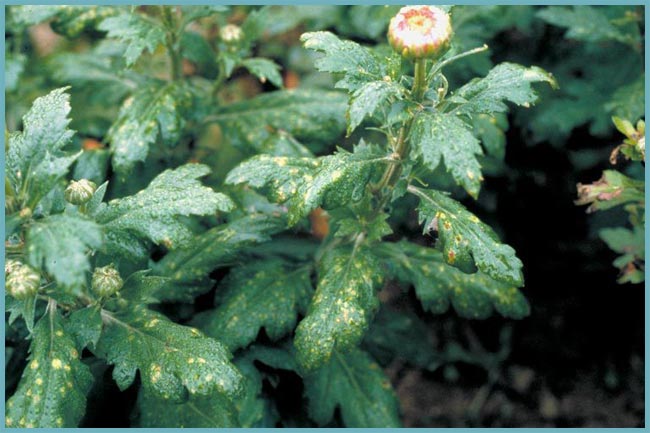

White rust
Shrub chrysanthemum: combination with other plants
Perennial garden culture goes well with fruit trees (it can be rowan or wild apple). A good combination is given by raspberries growing nearby, sea buckthorn, barberry. Shrub chrysanthemum looks incredibly attractive in the company of decorative leafy plants - hydrangea, ivy, wild grapes, lemongrass. The chrysanthemum looks charming and gentle surrounded by tall perennial plants: dahlia, shrub aster, asparagus and other plants.
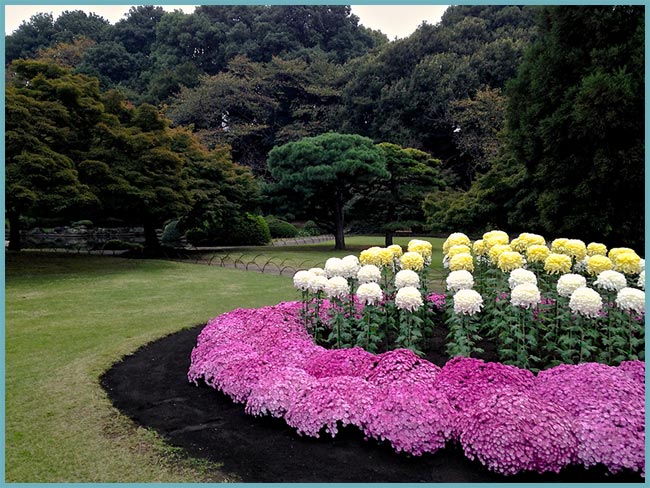

Chrysanthemums in landscape design


